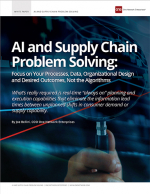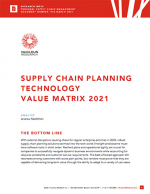Demand-Driven Supply Chains
Demand-driven is not a new concept, but there is a clearer focus on customer demand in realtime, it is a transformational strategy because it changes the way organizations think about the marketplace.
Professionals and executives in the supply chain world strive continuously for innovations, leading practices, and new ideas that can improve how supply chains help businesses grow profitably.
Because supply chains provide value to companies of all types, demand-driven value networks should be a prime objective.
“Demand-driven” is a relatively new term for an operations strategy, or business model, that is gaining momentum in the supply chain community.
This paper explores this strategy and provides some guidelines for adapting it to any business with supply chains in order to create true value.
Developing a “demand-driven business” is an emerging goal of business leaders. Knowing what customers bought yesterday and what they want to buy today is not enough.
Due to the increasingly global economy, shorter product cycles fueled by instantaneous information, and increasing specialized needs of global markets, the common views about supply and demand are no longer adequate.
While it is more important than ever to have near real-time information, even this is insufficient for today’s business leaders. Instead, companies must find ways to differentiate based on latent demand, unmet demand, and even emerging demand. Why customers buy is more important than who they are or what they buy.
Supply chains have a more important role in achieving demand-driven than ever before. The idea of shifting the focus of supply chains from “pushing products to markets” to “pulling products to sales” is not new.
Operations strategies of “make to stock,” “make to order,” and “make to both” have been the descriptors of supply chains ever since Dell brought to life “make to order and deliver in three days” in the early 90s.
It is common knowledge that as a company increases make and ship to order, its total costs of operations are reduced.
The markets, however, do not always work this way, at least not in any large scale for most products. Even Dell made some volume of product to stock (to forecast) and assembled to inventory for product availability.
And, as offshore sourcing became the predominant operations strategy, managers had to once again rely on sales forecasts with long lead times and extended supply chains. Moreover, supply chain managers began to worry more about supply (and its risks) than about demand.
So, the term “demand-driven” has been introduced in recent times to turn thinking back toward the customer. But it also has opened up new thinking around how best to manage a supply chain that is serving a volatile market, in unprecedented levels of complexity, while dealing with long distances and lead times from end-to-end.
What’s Related




Favorites





